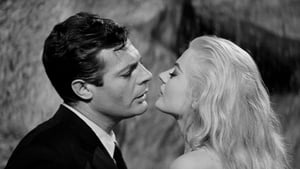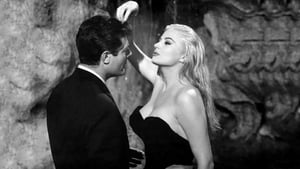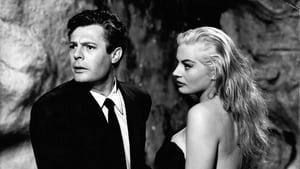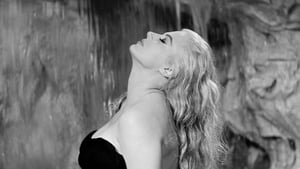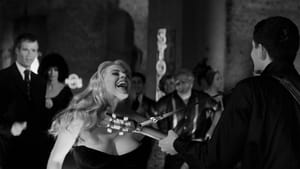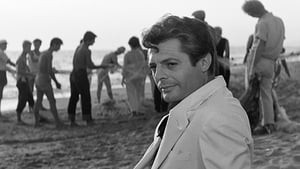Contact: [email protected]
Video Sources 0 Views
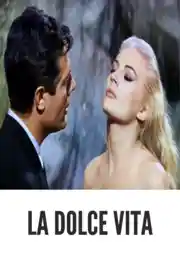
Synopsis
[ez-toc]





Introduction
In the ever-evolving world of cinema, where technology constantly reshapes our viewing experience, there’s a profound fascination with the classics. “La Dolce Vita Colorized,” a masterpiece directed by Federico Fellini in 1960, stands as a testament to the golden age of Italian cinema. The allure of black and white cinematography, the artful storytelling, and the unforgettable performances of Marcello Mastroianni and Anita Ekberg have etched “La Dolce Vita Colorized” into the annals of film history. Now, in a daring move, the classic has been reborn through the lens of colorization, breathing new life into its timeless narrative.
Read Media File Transfer Agreement: Terms and Conditions
Read FAQ
The Charm of the Original: “La Dolce Vita Colorized” (1960)
Before delving into the colorized version, it’s crucial to appreciate the charm of the original “La Dolce Vita Colorized.” Fellini’s opus revolves around Marcello Rubini, a tabloid journalist navigating the decadent nightlife of Rome. The film explores themes of hedonism, societal decadence, and the quest for meaning in a seemingly superficial world. Marcello Mastroianni’s portrayal of Rubini is nothing short of iconic, capturing the essence of a man torn between journalistic pursuits and the pursuit of true happiness. Anita Ekberg, as Sylvia, adds a layer of enchantment with her unforgettable Trevi Fountain scene.
“La Dolce Vita Colorized” not only captivated audiences but also garnered critical acclaim, winning the Palme d’Or at the 1960 Cannes Film Festival. Federico Fellini’s visionary direction and innovative storytelling techniques marked a turning point in Italian cinema, influencing generations of filmmakers.
The Evolution of Colorization in Film Industry
The decision to colorize a classic like “La Dolce Vita Colorized” is a bold move that raises questions about the evolving landscape of film preservation and presentation. The colorization process involves adding color to black and white films, a practice that gained popularity in the 1980s. Advanced colorization technology has since emerged, allowing for a more nuanced and sophisticated transformation of monochrome classics.
While the benefits of colorization include a more immersive visual experience for contemporary audiences, controversies persist. Purists argue that altering the original artistic intent compromises the integrity of the film. However, proponents assert that colorization breathes new life into old classics, making them accessible to a broader audience.
Reviving the Past: “La Dolce Vita Colorized”
Enter “La Dolce Vita Colorized 1960,” a bold endeavor to reinterpret Fellini’s masterpiece in vivid hues. The colorization of this iconic film adds a layer of complexity to Marcello Rubini’s character, whose exploits as a tabloid journalist in Rome become even more visually compelling. The decision to colorize may initially raise eyebrows, but as the narrative unfolds, the colors seamlessly integrate with the film’s timeless themes.
The colorization process allows audiences to witness the true vibrancy of Rome, from the glamorous parties to the iconic scenes like Sylvia’s dance in the Trevi Fountain. Marcello Mastroianni’s portrayal gains new depth as the nuances of his character emerge in a more visually striking manner. The decision to colorize “La Dolce Vita” may be controversial, but it undeniably offers a fresh perspective on a classic tale.
Preserving Cinematic Masterpieces for Future Generations
As we embark on this journey of rediscovering “La Dolce Vita” in color, it’s essential to consider the broader context of film preservation. The preservation of old films is not merely a nostalgic endeavor; it’s a commitment to maintaining our cultural heritage. Fellini, a luminary of Italian cinema, left an indelible mark with films like “8 1/2” and, of course, “La Dolce Vita.” Preserving these cinematic masterpieces ensures that future generations can appreciate the artistry and innovation that shaped the film landscape.
“La Dolce Vita” serves as a bridge between the past and the present, influencing filmmakers worldwide. Its preservation, whether in black and white or colorized, allows contemporary audiences to connect with the artistic vision of a bygone era. The discussion around colorization should not overshadow the broader conversation about the importance of preserving our cinematic legacy.
The Verdict: Is “La Dolce Vita Colorized” a Worthy Adaptation?
Now, the critical question arises: does the colorized version of “La Dolce Vita” hold its own against the original black and white masterpiece? As a film reviewer and editor, I approached this question with a mix of skepticism and curiosity. Having experienced both versions, it’s clear that the colorization adds a new dimension to the film without diluting its essence.
The colorized “La Dolce Vita” manages to enhance the viewer’s experience without overshadowing the brilliance of Fellini’s original vision. The vibrancy of the colors brings a modern flair to the timeless narrative, making it more accessible to contemporary audiences. While purists may argue that the black and white version is sacrosanct, the colorized adaptation offers a unique way to appreciate the film’s nuances through a fresh lens.
Experiencing the True Colors: Visual Aesthetics in “La Dolce Vita Colorized”
One aspect that deserves special mention in the colorized version is the revelation of the actors’ true colors. The preservation of clothing, set decorations, and visual details in their authentic hues adds a layer of authenticity to the film. It’s as if we are transported back in time, witnessing the glamour and decadence of 1960s Rome with a newfound clarity.
The colorization process doesn’t just paint the film with a broad brush but delves into the intricate details, showcasing the artistry behind the costumes and set design. This attention to visual aesthetics elevates the colorized “La Dolce Vita” beyond a mere adaptation; it becomes a celebration of the film’s inherent beauty, now revealed in its full spectrum.
Conclusion
In the grand tapestry of cinema, “La Dolce Vita Colorized 1960” emerges as a bold stroke, redefining how we perceive and experience classic films. The decision to colorize may be met with skepticism, but it opens the door to a new generation of cinephiles. As we navigate the complexities of film preservation and adaptation, “La Dolce Vita” remains a shining example of the enduring legacy of old movies.
The colorized version, while not a replacement for the original, offers a fresh perspective on Fellini’s classic, inviting audiences to appreciate its timeless themes in a modern context. The true victory lies in the preservation of cinematic masterpieces for future generations, ensuring that the magic of “La Dolce Vita” continues to captivate audiences, whether in black and white or in a vibrant burst of color. So, let us embrace the old films, savor the charm of the classics, and welcome the evolution of cinema with open arms.
